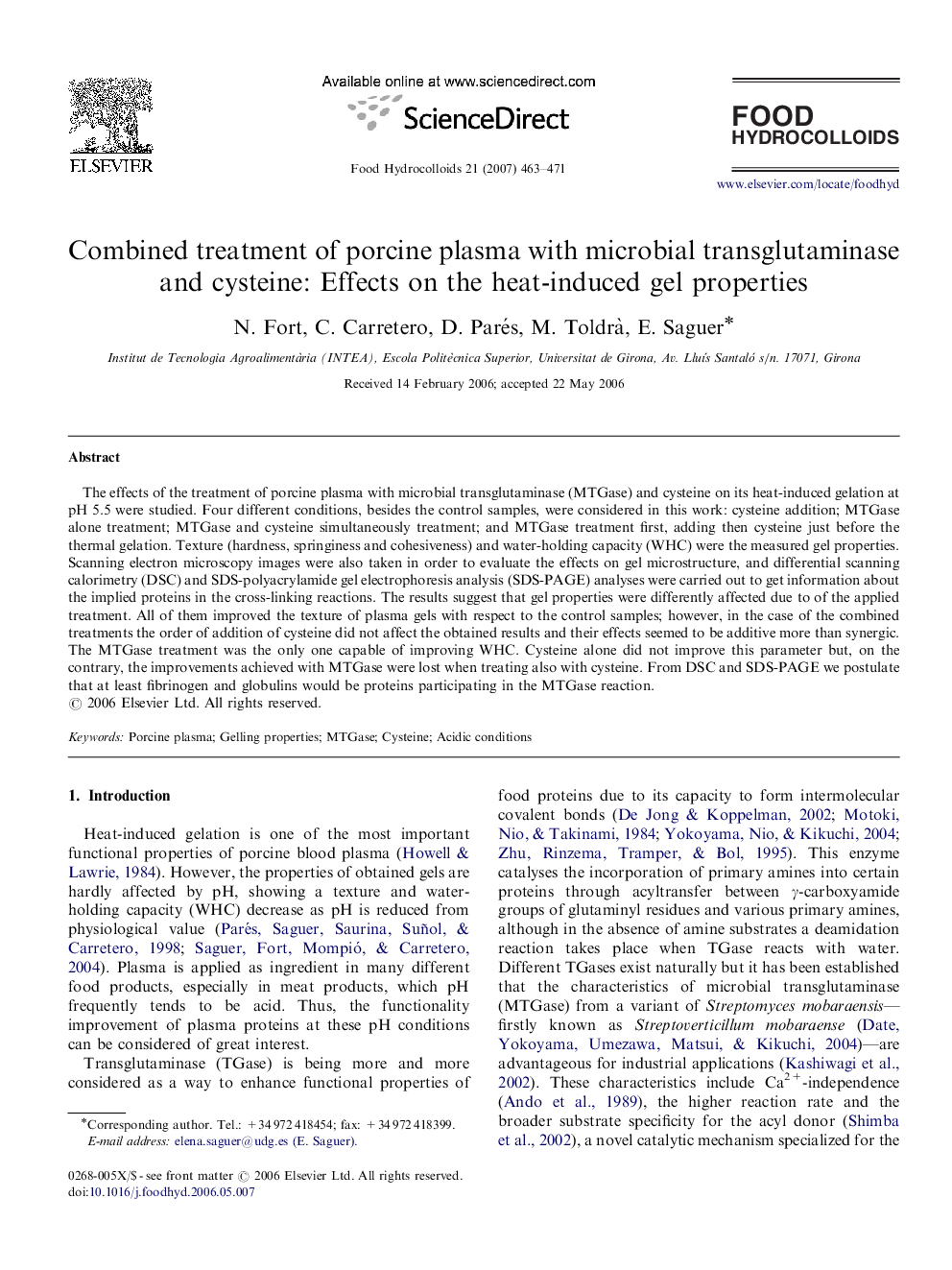| Article ID | Journal | Published Year | Pages | File Type |
|---|---|---|---|---|
| 605904 | Food Hydrocolloids | 2007 | 9 Pages |
The effects of the treatment of porcine plasma with microbial transglutaminase (MTGase) and cysteine on its heat-induced gelation at pH 5.5 were studied. Four different conditions, besides the control samples, were considered in this work: cysteine addition; MTGase alone treatment; MTGase and cysteine simultaneously treatment; and MTGase treatment first, adding then cysteine just before the thermal gelation. Texture (hardness, springiness and cohesiveness) and water-holding capacity (WHC) were the measured gel properties. Scanning electron microscopy images were also taken in order to evaluate the effects on gel microstructure, and differential scanning calorimetry (DSC) and SDS-polyacrylamide gel electrophoresis analysis (SDS-PAGE) analyses were carried out to get information about the implied proteins in the cross-linking reactions. The results suggest that gel properties were differently affected due to of the applied treatment. All of them improved the texture of plasma gels with respect to the control samples; however, in the case of the combined treatments the order of addition of cysteine did not affect the obtained results and their effects seemed to be additive more than synergic. The MTGase treatment was the only one capable of improving WHC. Cysteine alone did not improve this parameter but, on the contrary, the improvements achieved with MTGase were lost when treating also with cysteine. From DSC and SDS-PAGE we postulate that at least fibrinogen and globulins would be proteins participating in the MTGase reaction.
